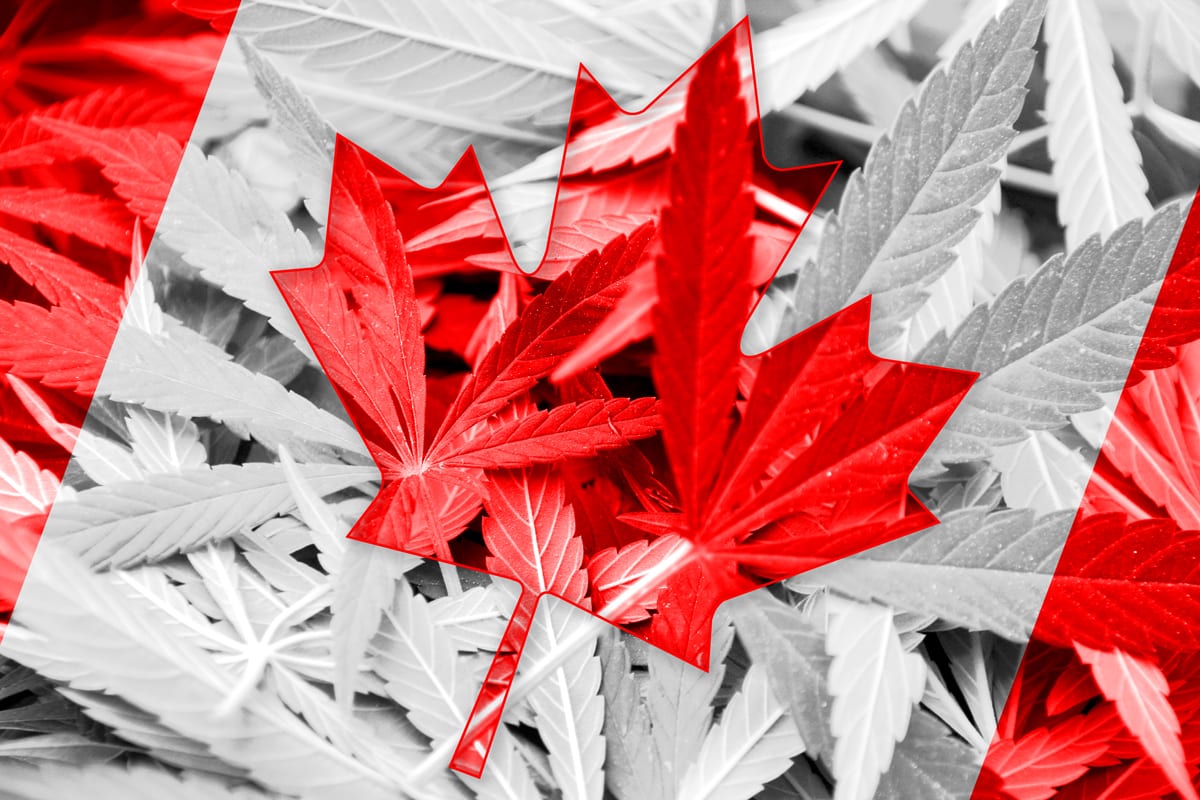The Birth of a $20 Billion Industry in Canada
Liberals Table Bill Making Canada First Member of the G7 to Legalize Pot
April 13, 2017 is a date that will be studied in history books around the world for decades to come.
The bill tabled on this date by the Liberal government marks the end of Canada’s wasteful War on Cannabis.
It makes Canada the first country among the G7 to legalize recreational use of cannabis, and will have a profound impact on legalization efforts around the world.
The bill allows law enforcement to finally wrest control of the drug trade from criminal gangs, and better control the flow of illegal drugs to our youth.
And in terms of the economy, it creates a new industry that we expect will generate more than $20 billion per year and thousands of new jobs.
What was not clear until this date was how exactly the federal government will roll out the legalization of cannabis for both medical and recreational use.
Those questions are now largely answered.
WHAT CANADA’S LEGALIZATION LAWS WILL DO
Here’s a quick primer on the most important aspects of the bill:
- The bill is intended to make if harder for young people to get their hands on marijuana. Sales of marijuana will be restricted to people 18 years of age and older. As task force member and former Toronto police chief Bill Blair said, ““As a former police officer, I know firsthand how easy it is for our kids to buy cannabis. In many cases, it is easier for our children to get cannabis than it is to get cigarettes. Today’s plan to legalize, strictly regulate and restrict access to cannabis will put an end to this. It will keep cannabis out of the hands of children and youth, and stop criminals from profiting from it.”
- The bill sets out new offences and tough penalties for people trafficking illegally in cannabis, particularly if they sell to anyone under the age of 18. Someone selling to a young person could be sent to prison for up to 14 years.
- Police will be resourced to go after organized crime gangs or anyone else who is not licensed and tries to traffic in marijuana, or who may attempt to smuggle cannabis to other countries.
- The bill sets out new laws that make it legal for individuals to hold 30 grams of cannabis.
- It will be legal for licensed companies to grow and sell cannabis, as well as certain extracts of the marijuana plant.
- The law opens the door for retail outlets, such as pharmacies and legal dispensaries, to buy cannabis products wholesale, and to sell it on a retail basis at brick and mortar stores. Provinces will be given authority over the local distribution and retailing of cannabis products.
- Licensed Producers will be able to sell cannabis through online mail order from coast to coast.
- The Criminal Code will be amended to simplify transportation of cannabis by legal producers.
- The Criminal Code will also be amended to make it easier to investigate cases of people driving while impaired by cannabis, and will toughen penalties for both drunk driving and drugged driving. Saliva testing kits will be distributed to police officers.
- Licensed producers will be prohibited from marketing cannabis in any way that makes it attractive to young people.
So, that sums up the intent of the new laws, but what does it mean for the industry?
DELOITTE STUDY ESTIMATES TOTAL IMPACT AT MORE THAN $22B A YEAR
In short, introduction of the bill opens the door for a new industry generating more than $20 billion in new revenues, and hundreds of millions in new taxes.
The most complete study to date on the impact of the marijuana industry came from Deloitte last year.
In its report Recreational Marijuana: Insights and Opportunities, Deloitte estimates the base market for recreational cannabis at between $4.9 billion to $8.7 billion.
To give some perspective, Canadians spend about $20 billion a year on all types of alcoholic beverages combined.
When the cannabis market matures, sales will be roughly the same as the entire market for beer in Canada, which stands at around $9 billion.
When you add the ancillary market of cannabis growers, Infused Product producers, testing labs and security the total new revenue climbs to between $12.7 billion.
And if you include the impact of tourism revenue, business taxes, license fees and the sale of paraphernalia, the total will climb to more than $22.6 billion a year.
ROLLERCOASTER RIDE FOR WEED STOCKS
The confirmation of legalization caused stocks in Canadian LPs to soar in the week prior to tabling of the bill.
Buyers followed the typical ‘buy on speculation, sell on news’ pattern, and on the day of the Liberal government’s press conference there was a significant sell off by profit takers.
Marijuana stocks generally climbed in spectacular fashion following the announcement last August that the Liberals would follow through on their promise to legalize. That upswing accelerated in the week before the bill was unveiled in Ottawa.
Aphria, for example, flew from $2.48 on Aug. 1, 2016 to a high of $8.39 last week. The company’s market cap briefly hit the $1 billion mark on April 9.
Equedia predicted this rise in our March 14 article “What Just Happened to my Weed Stocks?”
The US and Canadian marijuana indexes both fell sharply from Feb. 21 through Mar. 21 due to a couple of poorly thought out announcements by Parliamentary Secretary Bill Blair and US Attorney General Jeff Sessions.
We argued the long-term demand for marijuana shares is just beginning, and predicted strong growth for Canadian companies through to August next year.
In the week following the announcement, however, weed stocks fell. Share prices for market leader Canopy Growth, for example, fell from a high of $10.87 just before the announcement to $9.48 on April 17.
But this appears to be short-term selling as investors take advantage of what, for many, has been an exponential rise over the past year.
IS IT STILL A GOOD TIME TO BUY INTO THE MARKET?
Most analysts expect marijuana company shares to rise significantly over the next year, and the sector will likely outperform all others over the next year on the Canadian exchange.
That is still our prediction. More marijuana companies are going public this year, but stock prices will almost certainly climb sharply for all companies up until the July 1, 2018 deadline for passage of the legalization bill.
This is especially true for the more junior companies on the exchange, who have a lot more room for growth.
How share prices go after 2018 will depend on how the retail market responds, but until then weed stocks are in our personal ‘strong buy’ category.
Most analysts agree with this. The analyst’s consensus is that Canopy Growth (WEED), Organigram (OGI), Aphria (APH) and Cronos (MJN) are all a recommended Buy.
Several other companies, most of them newer to the exchange with faster growing market caps, are rated as a Strong Buy.
These include Cannimed (CMED), Emerald Health (EMH), Emblem (EMC) and Aurora (ACB).
A lesser known company that we think has great promise is Invictus, which now has two producers licensed for cannabis production in Canada, and as of Tuesday had a relatively low market cap of $67 million.
THE CASE FOR MARKET GROWTH
The greatest impetus for continued growth for the public sector companies is pretty simple.
Very few of the current Licensed Producers are profitable at this point, and their profits are not impressive.
This is mainly due to the fact the current regulations make it easier for people to buy marijuana from the black market, than to buy it legally from the LPs.
But full legalization will flip that on its head.
Legalization will make it very risky for anyone to buy marijuana illegally, while buying it legally from the Licensed Producers will be simple, quick and about the same cost. In short, the billions of dollars being spent on illegal marijuana will soon be pouring into the bank accounts of the legal Licensed Producers.
After Canada Day next year these companies will no longer trade on their potential; they will trade on their rapid growth in revenues and profitability.
If Canada follows the growth pattern in Colorado, by 2021 the sector will already be pushing $5 billion in revenue, divided between only a few dozen companies.
Most investors missed out on much of the early growth in these stocks, which happened between August 2016 and now.
But it’s not too late.
For investors, this truly is the time to either act or watch from the sidelines. The most dramatic upside growth in marijuana stocks will happen between now and in the roughly six months to a year following legalization.
The Green Rush is officially underway. It’s up to you whether you want to ride this gravy train, or watch from the station as it passes by.
By Gary Symons, Equedia
Disclosure: The author and the owners of Equedia hold investments in publicly traded (including some of the ones mentioned in this article) and privately held medical marijuana companies that will benefit from the legalization of recreational marijuana in Canada.














Trulife Distribution – Nutrition Distribution helps our clients achieve success in a complex, competitive retail environment. Our team of nutrition industry experts takes care of everything from importation compliance to marketing, sales and distribution at the ground level. There is no need to navigate the complicated intricacies of the American market when we have already done the work. Let us use our experience to expand your brand and put your product into the hands of American consumers. https://trulifedist.com/